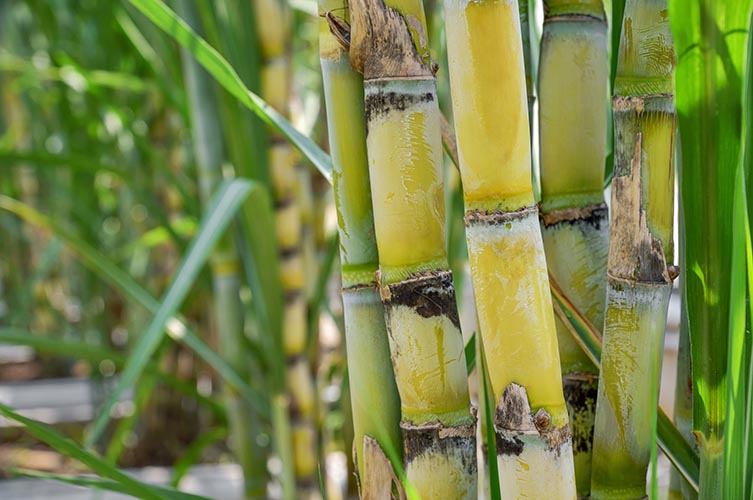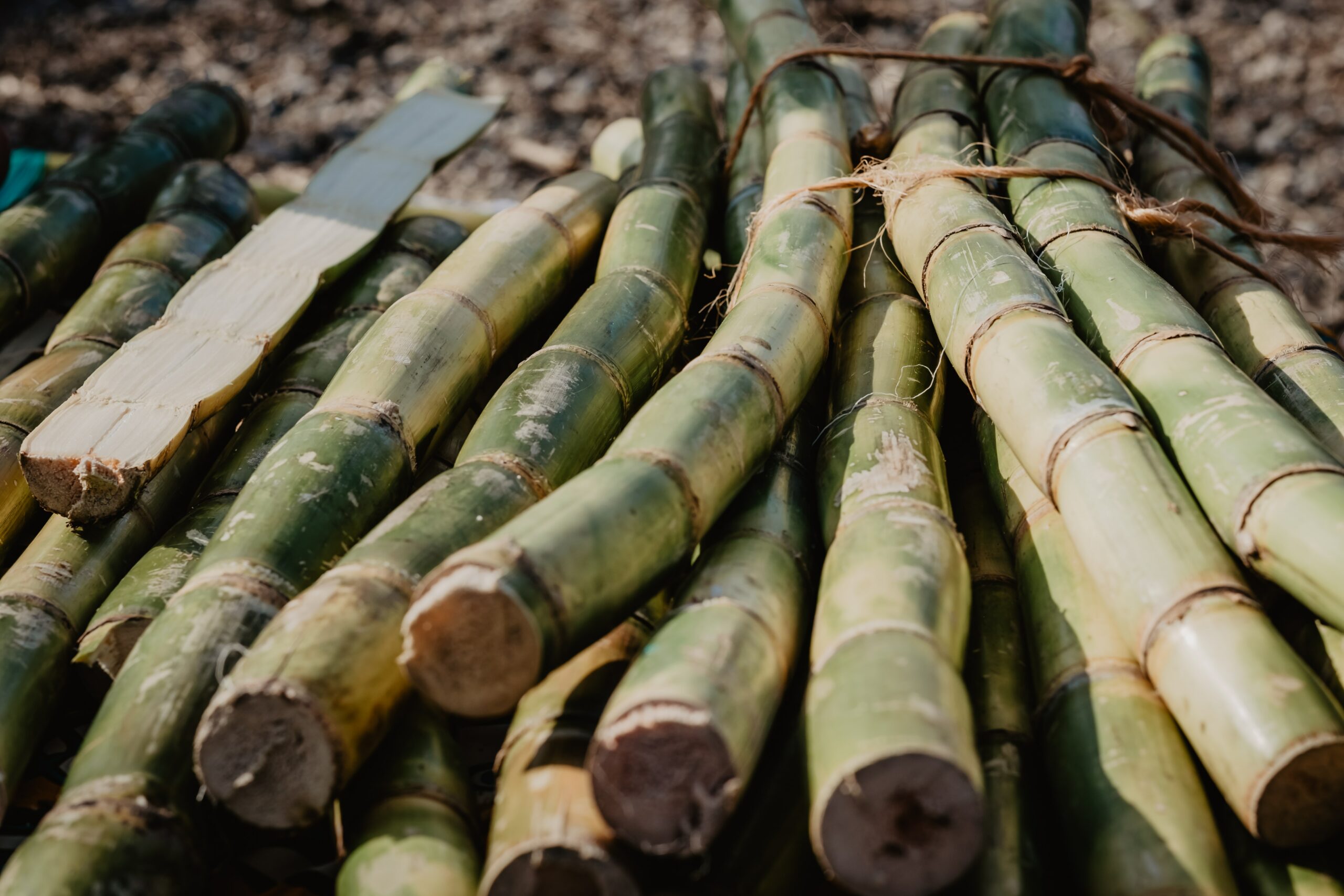What Are Sugar Canes Used For in School Science Projects?
Introducing the Value of Sugar Canes: What Are Sugar Canes Made Use Of For in the Walking Stick Sugar Market?
Sugar walking sticks function as the keystone of the cane sugar market, primarily providing the raw product needed for sugar manufacturing. Their capability to convert sunlight right into sucrose via photosynthesis is crucial. Beyond their sweetening properties, sugar walking sticks locate utility in numerous culinary applications and emerging markets. The complete degree of their impact prolongs beyond the kitchen area. This discussion will certainly explore the diverse roles of sugar walking sticks in both industry and economic situation.
The Role of Sugar Canes in Sugar Production
Sugar walking sticks function as the foundational resources in the cane sugar market, playing an essential duty in the production procedure. These high, seasonal lawns grow in subtropical and exotic climates, where they soak up sunlight and nutrients to produce sucrose. The harvesting of sugar walking sticks normally happens when the plants get to maturation, optimizing their sugar content.Once harvested, the canes undertake crushing to extract the juice, which contains dissolved sugars. This juice is then clarified and concentrated with evaporation, changing it right into a syrup. Consequently, formation happens, enabling the splitting up of sugar crystals from the remaining syrup.The extracted sugar undergoes more refining to achieve the preferred purity and quality - What Are Sugar Canes Used For. The entire process highlights the necessary contribution of sugar walking sticks to sugar manufacturing, highlighting their value as both a raw product and a catalyst in the manufacturing of cane sugar.
Diverse Applications in Food and Beverage Industry
In the food and drink sector, sugar walking cane serves several essential features. It acts not just as a key sweetener in different items yet likewise as a flavoring agent that enhances preference accounts. Additionally, its elements play a substantial role in fermentation and purification procedures, adding to the production of alcohols.
Sweetener in Products

The versatility of cane sugar as a sugar makes it a staple in a vast selection of food and beverage items. Extensively utilized in baked goods, it boosts the preference and appearance of cakes, cookies, and breads by giving dampness and promoting browning during cooking. In beverages, walking cane sugar is a prominent selection for sweetening teas, soft drinks, and juices, permitting for a well balanced flavor account. In addition, it functions as a crucial active ingredient in sauces, sauces, and dressings, adding to a harmonious blend of tastes. Walking stick sugar's capability to liquify promptly and its regular sweet taste profile even more solidify its function as a preferred sugar - What Are Sugar Canes Used For. On the whole, its varied applications highlight the integral duty of cane sugar in the culinary landscape
Flavoring Representative Usage
Making use of walking cane sugar as a flavor representative extends beyond its duty as a mere sweetener, enhancing a range of culinary creations. In the food and beverage industry, it improves taste accounts by balancing level of acidity and resentment, making it a crucial element in dressings, marinades, and sauces. Furthermore, walking cane sugar adds to the general mouthfeel, providing a pleasurable texture in baked products and confections. Its caramelization throughout food preparation adds depth to both tasty and pleasant recipes, while additionally serving as a chemical in jellies and jams. In drinks, cane sugar is utilized to magnify tastes in alcoholic drinks and soft beverages, ensuring an extra enjoyable alcohol consumption experience. This convenience highlights its significance in diverse culinary applications.
Fermentation and Purification
Cane sugar plays a significant role in fermentation and purification procedures, which are crucial in producing a range of liquors and food products. During fermentation, yeast converts sugars right into alcohol and carbon dioxide, an essential action in crafting drinks like rum and vodka. Purification further detoxifies these alcoholic mixes, increasing and concentrating flavors alcohol content. Beyond beverages, walking cane sugar is additionally indispensable in generating vinegar and specific preservative through fermentation. The convenience of walking stick sugar boosts the taste accounts and high quality of these products, making it indispensable in the food and drink market. Its payment not just supports standard approaches however additionally fosters technology in crafting new flavors and experiences for consumers.
Sugar Canes in Biofuel Manufacturing
As interest in sustainable power sources grows, sugar walking canes are significantly identified for their possibility in biofuel manufacturing. The biomass stemmed from sugar walking sticks can be transformed right into ethanol, a lasting fuel alternative that minimizes greenhouse gas discharges contrasted to nonrenewable fuel sources. This process normally involves fermenting the sugar removed from the walking stick, which is after that distilled to generate high-purity ethanol appropriate for use in vehicles.Additionally, sugar cane bagasse, the fibrous deposit left after juice removal, can be used as a feedstock for bioenergy. It can be shed to produce steam and electrical energy, adding to power self-sufficiency in sugar mills. Countries such as Brazil have actually effectively integrated sugar walking stick biofuel right into their power policies, resulting in decreased reliance on imported gas - What Are Sugar Canes Used For. Generally, sugar canes stand for an appealing opportunity for biofuel manufacturing, straightening agricultural experiment environmental sustainability objectives
Industrial Uses of Sugar Canes
While usually recognized mainly for sugar production, sugar walking canes additionally have varied industrial applications that prolong well past the food sector. The fibrous byproducts of sugar walking cane, called bagasse, offer as a beneficial resource in different sectors. Bagasse is generally used as a biofuel, generating power in sugar mills and other facilities. Furthermore, it can be refined into paper, cardboard, and eco-friendly products, advertising sustainable practices.In addition, sugar walking canes add to the manufacturing of molasses, a by-product used in the fermentation process for generating alcohol and yeast. This versatility makes sugar canes integral to the beverage and pharmaceutical markets. Moreover, sugar walking cane extracts are utilized in the cosmetics industry, supplying all-natural ingredients for skincare and appeal products. Generally, the commercial usages of sugar walking sticks highlight their value past sugar, showcasing their role in promoting sustainability and supporting numerous fields.
Economic Influence of Sugar Cane Cultivation
The financial influence of sugar cane farming is substantial, mainly through task creation and export income generation. This sector not only provides employment possibility in rural try this web-site locations yet likewise contributes significantly to nationwide economic situations through exports. Understanding these facets highlights the important duty sugar walking stick plays in both neighborhood and worldwide markets.
Job Creation Opportunities
Typically forgotten, the sugar cane industry plays an important duty in job production, considerably affecting neighborhood economic climates. The cultivation, harvesting, and handling of sugar walking stick create various job opportunity, from area employees to manufacturing facility personnel. In many areas, these work offer source of incomes for countless households, adding to area security and development. In addition, secondary sectors such as transportation, devices production, and retail benefit from the sugar walking stick market, additional broadening employment choices. Seasonal job throughout planting and harvest additionally supports short-lived positions, allowing workers to earn revenue in or else lean periods. Overall, the sugar cane sector functions as an essential financial engine, cultivating job production and boosting the top quality of life for several individuals and areas.
Export Revenue Generation

Sustainable Practices in Sugar Walking Stick Farming
While conventional sugar walking cane farming practices have actually usually caused ecological destruction, an expanding variety of farmers are embracing sustainable approaches that prioritize eco-friendly balance. These practices consist of plant turning, which enhances soil fertility and lowers pest break outs, and making use of organic plant foods to lessen chemical runoff. Furthermore, some farmers are applying integrated bug administration techniques, which concentrate on using all-natural killers and biopesticides rather than hazardous chemicals.Water preservation strategies, such as drip irrigation, are additionally gaining traction, permitting for effective water usage while preserving plant health. Many farmers are investing in sustainable energy resources, such as biomass from sugar walking stick waste, to power operations and decrease their carbon impact. These sustainable practices not just protect ecological communities but also improve read this article the lasting feasibility of sugar walking stick farming, making certain that it can continue to meet international sugar demands while minimizing ecological effect.
Frequently Asked Questions
How Are Sugar Canes Harvested and Processed?
Sugar canes are harvested using mechanical cutters or hands-on approaches, after that carried to factories. There, they go through washing, crushing, and removal processes to acquire juice, which is after that cleared up, vaporized, and taken shape into sugar.
What Is the Nutritional Value of Sugar Walking Cane?
The dietary worth of sugar cane consists of carbohydrates, largely in the form of sucrose, in addition to trace quantities of nutrients like calcium and potassium. It is low in healthy protein and fat content in general.
Can Sugar Walking Cane Be Grown in Non-Tropical Areas?
Sugar walking cane can be expanded in non-tropical areas, however it needs details problems such as sufficient click over here heat, wetness, and ideal dirt. Adaptation and cultivation techniques are vital for successful development outside conventional tropical climates.

What Illness and parasites Influence Sugar Walking Stick Crops?
Diseases and parasites noticeably affect sugar walking cane plants. Common hazards consist of the sugarcane borer, red rot, and mosaic infection, which can reduce yield and high quality, necessitating effective monitoring techniques to shield these crucial farming resources.
Just How Does Sugar Cane Farming Impact Citizen Communities?
Sugar walking stick farming greatly effects local communities by giving work opportunities, promoting financial development, and sustaining neighborhood services. It can additionally lead to ecological issues and social challenges, impacting community wellness and sustainability. Sugar canes serve as the keystone of the cane sugar market, largely supplying the raw material needed for sugar manufacturing. Sugar walking sticks serve as the foundational raw material in the walking cane sugar industry, playing a critical role in the production process. The harvesting of sugar canes generally happens when the plants reach maturity, maximizing their sugar content.Once harvested, the walking canes undertake crushing to draw out the juice, which has liquified sugars. While frequently acknowledged largely for sugar production, sugar walking canes additionally have diverse commercial applications that expand well past the food field. As international demand for sugar continues to climb, nations abundant in sugar cane resources capitalize on this possibility, exporting raw sugar and refined products to international markets.